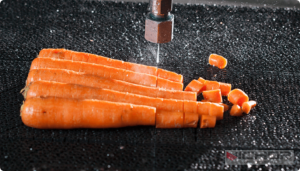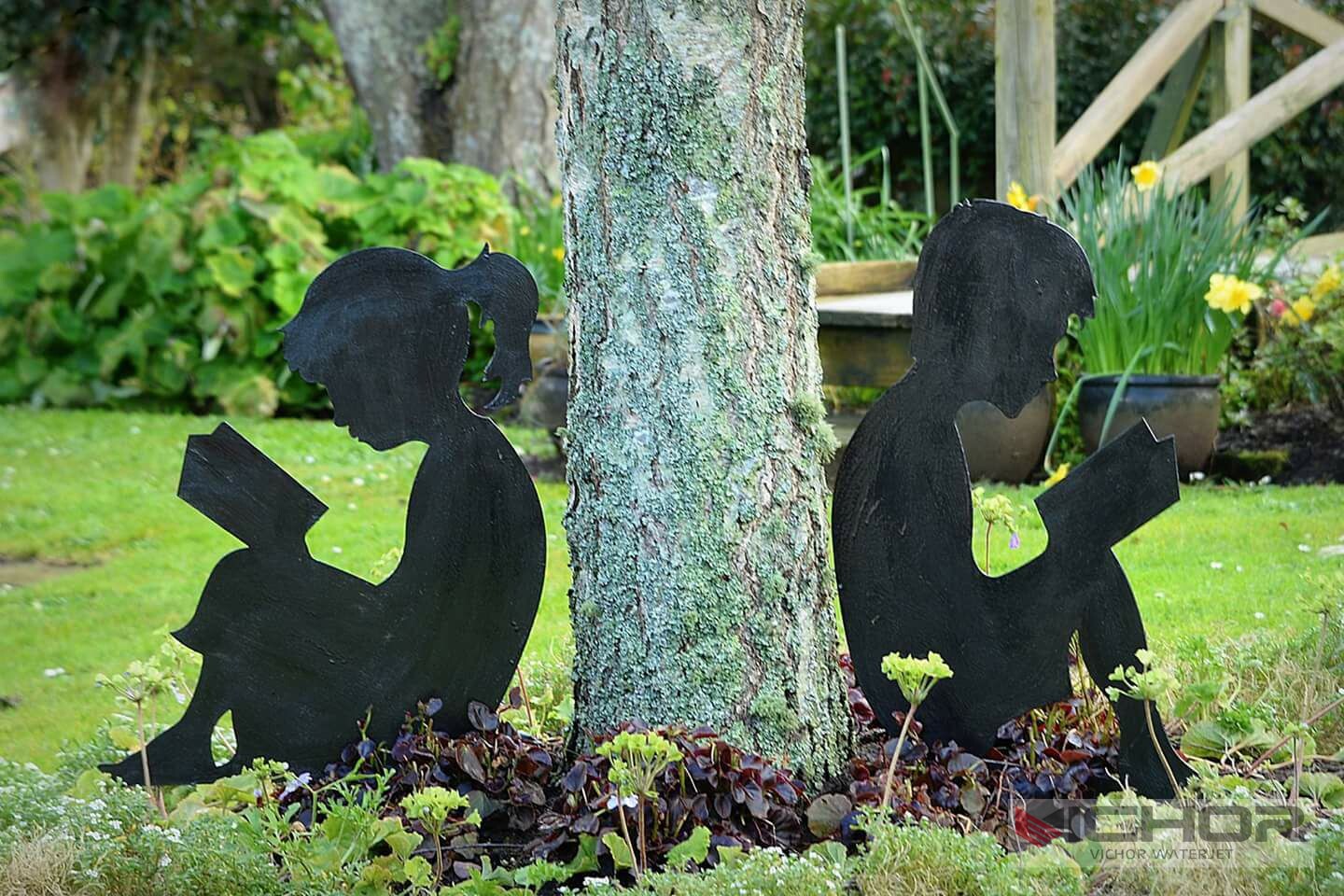
What Can Custom Waterjet Creations Actually Do for Your Project?
When you’re tackling a design or fabrication project, whether it’s a home renovation, a corporate signage installation, or a piece of functional art, you often hit a wall. How do you cut complex, durable materials with precision and intricate detail without compromising their structural integrity? The answer increasingly lies with a powerful and versatile technology. This is where the world of custom waterjet creations comes into play, offering solutions that traditional tools simply cannot match. This process isn’t just about cutting; it’s about unleashing creativity and achieving unparalleled results in material fabrication. Let’s dive into the specific aspects that make custom waterjet creations a game-changer.
The Core Technology Behind Custom Waterjet Creations
At its heart, a waterjet cutter is a tool that uses a very high-pressure stream of water, often mixed with an abrasive substance like garnet, to slice through materials. Imagine a stream of water moving at speeds nearly three times the speed of sound, focused into a tiny, precise beam. This is the force behind every piece of custom waterjet creations. The process is computer numerically controlled (CNC), meaning a digital design file guides the waterjet head with incredible accuracy, often within the width of a human hair.
This technology is fundamentally cold-cutting. Unlike laser or plasma cutters that generate intense heat, a waterjet does not create a Heat-Affected Zone (HAZ). This means the material’s inherent structure around the cut line remains unchanged—no warping, hardening, or thermal stress. This characteristic is the foundational pillar that allows for the high quality and precision of custom waterjet creations, making it possible to work with materials that are sensitive to heat.
Unmatched Material Versatility
Perhaps the most significant advantage of opting for custom waterjet creations is the sheer breadth of materials it can handle. This is not a one-trick pony. The same machine that effortlessly cuts through a half-inch thick sheet of hardened tool steel can, in the next moment, delicately slice through a delicate piece of marble, a soft rubber gasket, or a complex composite.
Consider the possibilities:
Metals: Stainless steel, titanium, brass, aluminum, and armor plate.
Stone and Tile: Granite, marble, slate, and glass-backed mosaic sheets for stunning flooring and wall features.
Glass: From thick laminated glass for tables to delicate stained-glass patterns.
Composites and Plastics: Fiberglass, carbon fiber, acrylic, and bulletproof polycarbonate.
This material-agnostic approach makes custom waterjet creations the go-to method for projects that combine different materials, ensuring a consistent and high-quality cut across the board.
The Precision and Complexity of Design
When people think of custom waterjet creations, they often envision the incredibly intricate and detailed outcomes this technology produces. Because the cutting tool is a narrow stream of water, it can navigate sharp corners, complex curves, and fine details that would be impossible for a router or would be destroyed by a laser’s heat. The kerf, or the width of the cut, is exceptionally small, allowing for tight nesting of parts to minimize material waste.
This precision enables the production of parts with incredibly tight tolerances, essential for aerospace, automotive, and architectural applications where every millimeter counts. Furthermore, it allows for the creation of beautiful and complex art pieces, detailed corporate logos, and intricate inlays in wood or stone. The only real limit is the digital design file, empowering designers to push the boundaries of their custom waterjet creations.
Environmental and Operational Advantages
In an era where sustainable and clean manufacturing is increasingly important, custom waterjet creations offer several environmental and operational benefits. The process itself generates very little dust or airborne particles, creating a cleaner and safer workspace for operators. Since it’s a cold-cutting process, it doesn’t produce toxic fumes or gases, which is a common issue with melting-based cutting techniques, especially when working with plastics or coated metals.
Furthermore, the primary waste product is the spent abrasive material and the water itself, both of which can be effectively managed and often recycled within a closed-loop system. The ability to nest parts very closely together also significantly reduces material scrap, contributing to a more efficient and less wasteful manufacturing process. These factors make choosing a provider of custom waterjet creations a more environmentally conscious decision.

Practical Applications Across Industries
The real-world applications for custom waterjet creations are virtually limitless, spanning from heavy industry to personal artistic expression.
Architecture and Interior Design: Custom floor inlays combining different types of stone and metal, intricate balcony railings, unique countertops, and detailed wall panels.
Aerospace and Automotive: Precision parts from composites and high-strength alloys, gaskets, and insulation components where no heat damage is critical.
Art and Sculpture: Artists use waterjets to create large-scale metal sculptures, detailed public art installations, and complex patterns that would be unachievable by hand.
Industrial Machinery: Durable parts, jigs, fixtures, and prototypes are produced quickly and accurately from a vast range of materials.
Personalized Projects: From custom fire pits and decorative house numbers to one-of-a-kind furniture pieces, the technology is accessible for bespoke, personal projects.
The adaptability of custom waterjet creations ensures that whether the project is measured in microns or meters, the outcome is consistently precise, clean, and of the highest quality.
Frequently Asked Questions
Q1: How thick of a material can a waterjet actually cut?
A1: The cutting capacity of a waterjet is impressive. Standard systems can reliably cut through materials over 12 inches (300 mm) thick, especially with softer substances like foam, rubber, and composites. For very hard materials like titanium or tool steel, effective cutting is typically achieved in thicknesses up to 6-8 inches (150-200 mm). The specific capability depends on the pump pressure and the type of material.
Q2: Is there a risk of the water causing rust or water damage to the material?
A2: This is a common concern, but it is largely mitigated. The actual water exposure time is very brief. For metals that are prone to rust, such as mild steel, many fabricators will apply a light rust inhibitor immediately after cutting. For other materials like stone, glass, or most plastics, the water poses no long-term damage whatsoever. The parts are typically dried quickly after the cutting process is complete.
Q3: What are the limitations of custom waterjet creations?
A3: While incredibly versatile, waterjet cutting does have a few limitations. It is generally not the fastest process for very simple, high-volume cuts on thin, soft materials where a die cutter or router might be more economical. The initial entry cost for a high-pressure system can be significant. Additionally, the cutting stream creates a slight taper on the edge of the cut (wider at the top than the bottom), though this can be minimized and accounted for in the design process.
Q4: Can a waterjet create internal cuts or patterns without starting from an edge?
A4: Yes, absolutely. This is a key feature. The waterjet head can be programmed to pierce the material to start a cut from any point on the surface, not just the edge. This is essential for creating internal cutouts, intricate patterns, lettering, and parts that are completely separated from the surrounding material, like the pieces of a puzzle.
Q5: How does the finish of a waterjet cut edge look and is secondary finishing needed?
A5: A waterjet cut edge has a characteristic matte, satin-like finish, often described as a “soft” texture. For many applications, especially industrial ones, this finish is perfectly acceptable and requires no further work. However, the edge can exhibit a subtle “striation” or wave pattern. If a perfectly smooth, polished edge is required for aesthetic reasons, then secondary finishing like sanding or polishing will be necessary. The great news is that since there is no heat-affected zone, this post-processing is straightforward.
continue reading
Related Posts
- 1379 words6.9 min read


